Get Tech Tips
Subscribe to free tech tips.
Take a Deep Breath: Respiratory Hazards in HVAC
DISCLAIMER: HVAC School is NOT an official OSHA safety training resource! Although we provide safety tips in good faith, our website is not a substitute for safety training from an authorized OSHA training source.
When most people think about respiratory devices, their minds probably jump to soldiers wearing gas masks in warfare, hazardous waste cleanup, or hospital personnel.
They may not expect HVAC technicians to wear respirators, but our work contains quite a few respiratory hazards. Some job sites have harmful solid aerosols that can accumulate in our lungs. Large gaseous refrigerant leaks can cause severe respiratory complications, including death.
This article will cover the respiratory hazards we may encounter in our work, personal protective equipment we can use to minimize health risks, and special considerations with PPE.
Refrigerant poisoning
Many of you have probably heard about people who inhale refrigerants to get high. That’s about as dangerous as inhaling compressed air.
Of course, none of us would be intentionally inhaling refrigerant on the job. However, we can still be exposed to those chemicals through large leaks. If you know you’ll be dealing with a system that has a significant leak, then it’s certainly in your best interest to have respiratory protection.
Refrigerant poisoning can cause dizziness and excitability in the early stages, which is one reason why people choose to get high from it. However, those symptoms can quickly progress to headaches, nausea and vomiting, and seizures. Leaking refrigerant is definitely NOT something to mess around with. It will impair your senses and judgment in small amounts and could kill you in large amounts.
ASHRAE has two designations for refrigerant toxicity: A and B. R-410A is non-toxic, so it is a Class A refrigerant (A1). Ammonia or R-717 is a notoriously toxic refrigerant, so it is a Class B refrigerant (B2L). According to Bacharach, Class B refrigerants have demonstrated toxicity in amounts under 400 ppm (less than roughly 0.04% of the total air content). However, non-toxic Class A refrigerants are not 100% safe; according to RSES, R-410A can cause harm if it exceeds 1,000 ppm (0.1% of the total air content). While it takes a lot more R-410a to cause bodily harm than ammonia, it's still not safe to inhale copiously.
Asphyxiation (oxygen starvation) is a risk we face in confined spaces. Refrigerant can displace oxygen if it's heavier than air and fill small, closed-off rooms from the bottom up. Many common refrigerants, including R-22, R-410a, and CO2, are heavier than air and will suffocate you if they begin to displace oxygen. Ammonia is a notable exception here; although it's toxic, it's lighter than air and would rather leave a space than displace oxygen.
Even though any refrigerant can be dangerous in large, steady amounts, you must be extra careful when dealing with refrigerants that are toxic (R-717 and R-123) or heavier than air when working in a confined space.
Asbestos
Many of us may primarily associate asbestos with construction work, particularly the demolition side of it. However, ACHR News listed asbestos exposure as a severe threat in our profession in its article titled “The 5 Biggest Safety Threats to HVAC Contractors.”
Asbestos is a flame-resistant material that used to be prevalent in building insulation, especially in attics. We even used to use it in ductwork insulation. However, it is a carcinogenic material that has been linked to debilitating and potentially deadly diseases.
Some of you may regularly work on HVAC systems in homes or buildings built before the 1980s. Unless those buildings had their asbestos removed, you could very well encounter asbestos in the drywall, duct insulation, vinyl flooring, and other insulated areas. Lately, however, asbestos has been largely discontinued (if not outright banned for most applications). Many buildings that used asbestos insulation have had the asbestos removed. The person in the picture below is washing asbestos away from a torn-down wall. (Take note of the respirator.)
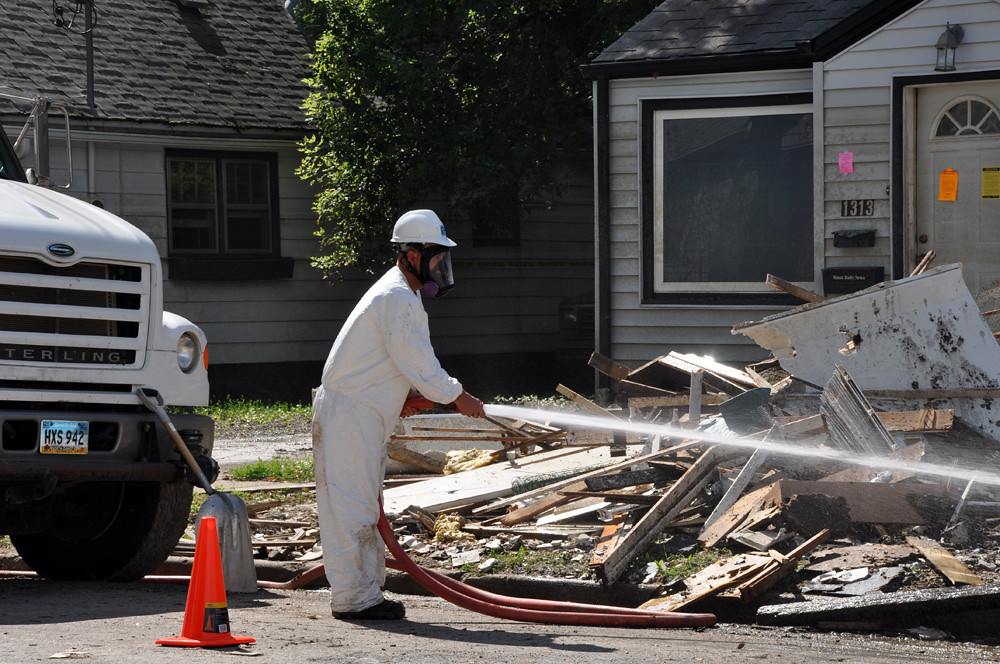
Asbestos is only dangerous when you disturb the fibers trapped inside the insulation. When you drill into those insulation materials or otherwise disturb them, the asbestos fibers become airborne and may enter your respiratory system. When asbestos fibers accumulate, they may wreak havoc on your lungs and lead to death.
According to Mayo Clinic, asbestosis is a non-cancerous disease that causes discomfort and difficulty breathing. That’s because asbestos accumulates in the small sacs inside your lungs. Those small sacs, called alveoli, have a massive surface area and help collect oxygen from the air we inhale. When these sacs get clogged with asbestos, it becomes much harder to obtain oxygen.
Mesothelioma is a rare type of cancer in the mesothelium. That is the thin tissue layer covering your internal organs. Unsurprisingly, asbestos exposure often causes mesothelioma in the tissue surrounding the lungs. As with asbestosis, you can expect to experience difficulty breathing and shortness of breath. However, you may also notice strange lumps on your chest. (All information is from Mayo Clinic.)
Lung cancer is already pretty well-known, and it has other causes than asbestos exposure (including smoking cigarettes). If you smoke cigarettes, it would be best for you to be extra careful around respiratory hazards, not only potential asbestos exposure.
For more information on asbestos, please consult the EPA’s resources and OSHA’s asbestos fact sheet.
Silica Dust
Another airborne hazard is silica dust. Silica is an umbrella term for crystalline solid particles that may enter your respiratory tract and cause damage to your lungs. (Those solid particles are typically quartz, cristobalite, or tridymite.)
You may expose yourself to silica dust whenever you drill into concrete, masonry, or other large mineral materials. You may also come into contact with silica dust if you’re installing HVAC equipment at a construction site where people drill concrete or masonry around you.
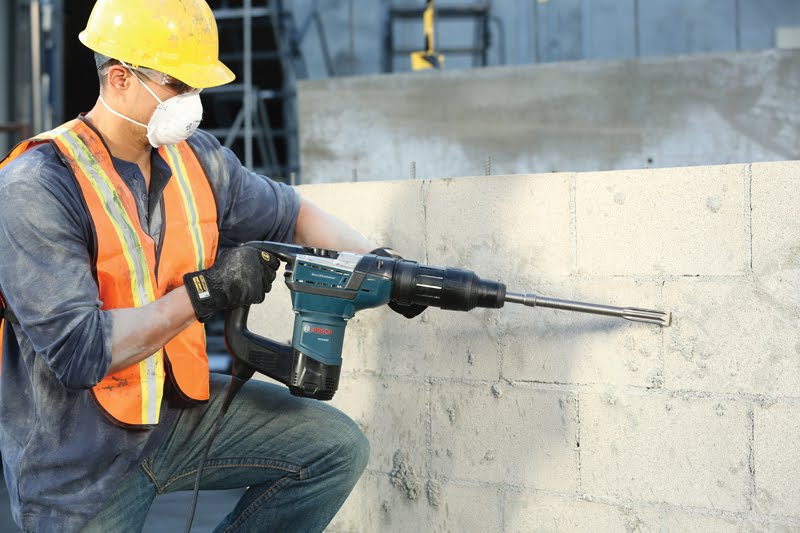
Unlike asbestos, silica dust is NOT carcinogenic. However, it can still cause problems without presenting a cancer risk. Silicosis is just like asbestosis. However, it is caused by inhaling silica dust instead of asbestos. Silicosis makes it more difficult to breathe and renders the body more vulnerable to respiratory infections. The white blood cells in the lungs cannot effectively fight off bacteria and fungi because the lungs are overwhelmed with silica dust. In short, you are more likely to die from pneumonia or other ordinary respiratory diseases if silica has accumulated in your lungs.
Please check out the CDC’s silicosis resource if you would like more information on silica dust in construction and related industries. That resource also includes case studies and dust control methods.
Radon
According to the EPA, radon is a naturally occurring, colorless, odorless radioactive gas. We mostly see it as a natural byproduct of uranium decay in rocks and soils underground. It disperses rapidly outdoors, but it can be dangerous when it seeps into homes through cracks.
An estimated 1 in 15 homes has high radon levels. Radon gas is also heavier than air, so you're most at risk of encountering it in basements of homes and public buildings alike, including schools. Without a ventilation system in place, radon can accumulate in those low, confined areas and pose a threat to human health.
Over time, repeated exposure to radon can cause lung cancer. According to the CDC, radon gas is responsible for over 20,000 lung cancer deaths annually; only smoking causes more lung cancer deaths. If you encounter a large amount of radon over a short period of time, you also put yourself at risk of radiation poisoning.
Carbon monoxide (CO)
I think we all saw this one coming.
Even though we’re all probably more familiar with CO hazards than those of asbestos and silica dust, CO is still exceptionally dangerous. For one, you can neither see nor smell CO. You may not detect CO in a space without a CO monitor or until you start experiencing severe CO poisoning symptoms.
On top of that, your body cannot tell the difference between CO and oxygen. CO displaces oxygen in the bloodstream, so your lungs supply your blood with CO instead of oxygen. Your heart then pumps that oxygen-poor blood to your organs. Those organs, especially the brain, need oxygen to function correctly; they cannot function as intended if CO has displaced oxygen in your blood.
Your heart constantly pumps blood to your body, so CO poisoning occurs rather quickly. Symptoms show up much more quickly when a space’s CO content exceeds the OSHA permissible exposure limit of 50 ppm (parts per million). When the CO content in a space exceeds that limit, you’ll most likely get a headache within a couple of hours.
Headaches are a primary symptom of CO poisoning because your brain isn’t getting the oxygen it needs. Other neurological symptoms that indicate poor brain functioning are dizziness, confusion, and blurred vision. Other general symptoms tend to be flu-like, and they include nausea, fatigue, and shortness of breath. Prolonged and excessive CO exposure will lead to unconsciousness and death.
Jim Bergmann did an excellent job covering the risks of CO poisoning in a presentation he gave about combustion analysis. You can watch the video of that presentation on our YouTube channel HERE.
Carbon dioxide (CO2)
While carbon dioxide isn't anywhere near as deadly as its CO cousin, it's still something we should watch out for. Some technicians may come across CO2 in combustion and even as a commercial refrigerant, but we all encounter it when we exhale.
CO2 is also heavier than air and will displace it in a tight space. If you're in a small, confined space with leaky gas furnaces or refrigeration equipment, you could start to feel a bit woozy after some time. That's because high levels of CO2 exposure can cause drowsiness, weakness, and difficulty breathing. In excessive amounts, CO2 can also cause respiratory arrest, coma, and death, but we'll rarely find ourselves in those scenarios. According to a study by Permentier, Vercammen, Soetaert, and Schellemans, CO2 must make up 5% of the total air content (50,000 ppm) to cause severe dizziness, and it must exceed 10% (100,000 ppm) to result in coma and death.
CO2 exposure is also something residential techs can think about when suggesting IAQ solutions in homes with a large number of occupants. If you've ever gotten sleepy after a long, crowded Thanksgiving celebration indoors, you may have CO2 to thank, not just the turkey. Now, imagine a small-to-medium-sized house that has several people breathing in it all day long. If you don't address the possibility of excess CO2, the occupants could be sluggish without knowing why!
Bacteria, fungi, and viruses: IAQ villains
Regardless of your opinion on IAQ products, it's pretty hard to deny that viruses, bacteria, and fungi reduce the air quality and safety inside buildings.
Bacteria

A medical illustration of drug-resistant Streptococcus pneumoniae bacteria. Original image sourced from US Government department: Public Health Image Library, Centers for Disease Control and Prevention.
Bacteria can cause you to develop respiratory infections directly. Respiratory disease-causing bacteria include Streptococcus pneumoniae (pictured above), Haemophilus influenzae, and Moraxella catarrhalis. These bacteria can run rampant in places like schools, military barracks, and college dorms.
These bacteria stick to the membranes in your respiratory tract and begin to grow on them. Sounds pretty nasty. Your body has some natural defenses against these bacteria, but allergies can weaken these defenses and make people more susceptible to bacterial respiratory infections. (Source: Cappelletty, Diane. “Microbiology of Bacterial Respiratory Infections.” The Pediatric Infectious Disease Journal.)
Fungi

Have you ever walked into a run-down building and had your nose assaulted with a musty odor? That would indicate that we have a moisture problem (or fungi… any term that prevents us from saying the naughty four-letter “M” word will do).
Fungal growth gives off more than an unpleasant smell. According to the CDC, some people can expect mild irritation (stuffy noses, itchy eyes, etc.) when fungal spores are in the air. These effects can be more intense if a person is allergic to mold. Studies also suggest that early mold exposure can lead to the development of asthma in children. Fungal problems, especially in homes with people who are allergic to mold, can also make it harder for the human body to prevent bacterial respiratory infections.
Viruses
Over the past two years or so, viruses have taken the center stage in discussions about indoor air safety and quality. At this point, it should go without saying that viruses make people sick. Viruses may also make people more susceptible to bacterial infections if they damage tissues and membranes in the body.
When people who have been infected with viruses breathe indoors, that air gets circulated in the HVAC system. Viruses don't “grow” on surfaces the same way that bacteria and fungi do, but they can stay airborne and travel through a building via the HVAC system. The only way to stop a virus from circulating through the air is to catch it in a filter.
We've seen more and more discussions about HEPA filtration as a means of reducing the rate of viral infections indoors. Our friends at Smart Air put out an excellent article about using proper ventilation and HEPA air purification to slow the spread of COVID-19.
How can I protect myself from respiratory hazards?
As you can see, we encounter a wide range of respiratory hazards in our line of work. There isn't a one-size-fits-all protection strategy against refrigerant leaks, CO, CO2, asbestos, and silica dust. So, we must assess the risks at the job site and determine whether proper ventilation will suffice or if we need to use respirators.
Ventilation
Sometimes, we have line set or condenser coil leaks outside and don't have to worry about refrigerant poisoning because we're surrounded by fresh air. However, we need to take caution when working indoors, especially if we find cracked heat exchangers in basement furnaces. On the commercial side, we could deal with leaking refrigerant (sometimes CO2) in motor rooms.
In the case of refrigerant leaks, CO, and CO2, we must ensure that our indoor work areas have good ventilation.
We measure the toxic effects of these three substances in parts per million (ppm). So, we need to find ways to keep those ratios as small as possible. With proper ventilation, we can dilute the indoor air with those toxins and reduce the presence of those toxins in the air. Even opening a window or keeping a door open can make a difference.
If you can't open a window or door, make sure you know your exit route. If you start to feel weak or get a headache, you need to be able to get out ASAP.
Respirators
When working at job sites with asbestos or silica dust, you can use a respirator to filter out the toxins. According to the U.S. Department of Housing and Urban Development, some NIOSH-approved respirators may also protect you from radon gas.
However, respirators are NOT a solution for everyone. Some people do not have the physical fitness or tolerance for tight spaces required to wear a respirator effectively. Also, although respirators come in many shapes and sizes, they may not fit some people at all.
If your job ever requires you to wear a respirator, you’ll need a physician’s approval first. Not everybody can handle the rigors of performing hard work with a bulky, hot device that restricts their vision. People with distinct facial shapes, large beards, scars, or broken noses may also be unable to wear respirators effectively enough to protect themselves.
OSHA requires employees to undergo a fitting test and complete training before performing jobs where a respirator is needed.
What types of respirators can I use?
There is a wide range of respirators on the market. Choosing the correct one can seem like an overwhelming task, and we totally understand.
To simplify the dilemma just a little bit, we’re going to describe the two main categories of respirators: air-purifying and air-supplied.
Air-purifying respirators have a filter that catches toxins and contaminants. You must pull the air through the mask, which takes a bit more effort than normal breathing. As you can see below, air-purifying respirators range from the small N95 masks to the large devices you’d expect to see in a biohazard doomsday movie.

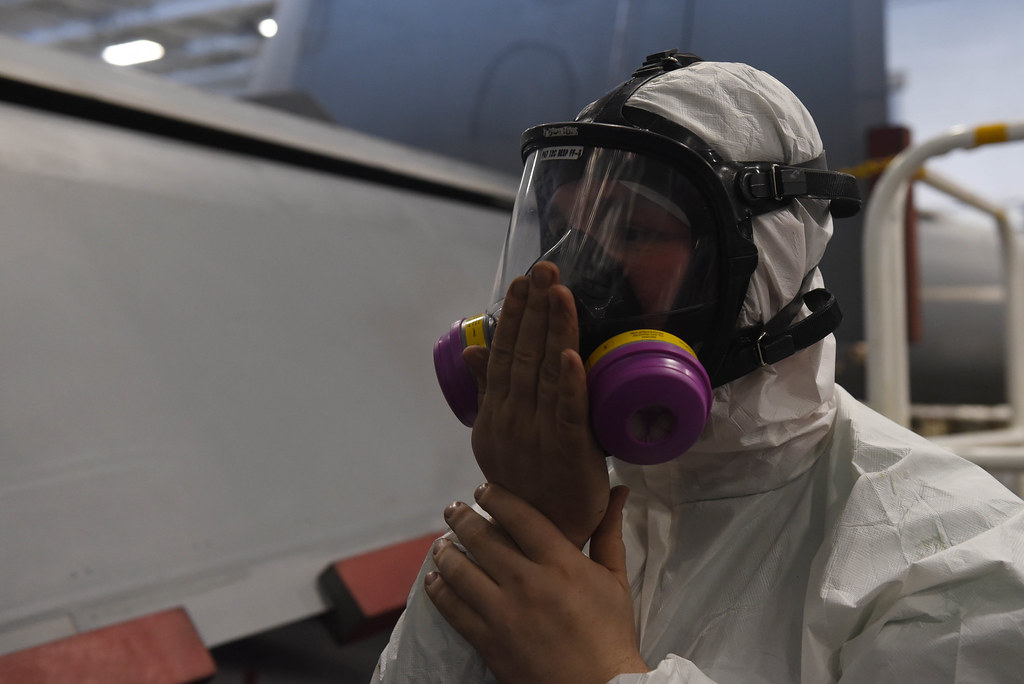
Air-supplied respirators pump clean air straight to you. As you might imagine, these are usually rather bulky and heavy. These will look almost like scuba diving gear or gas masks in war movies.
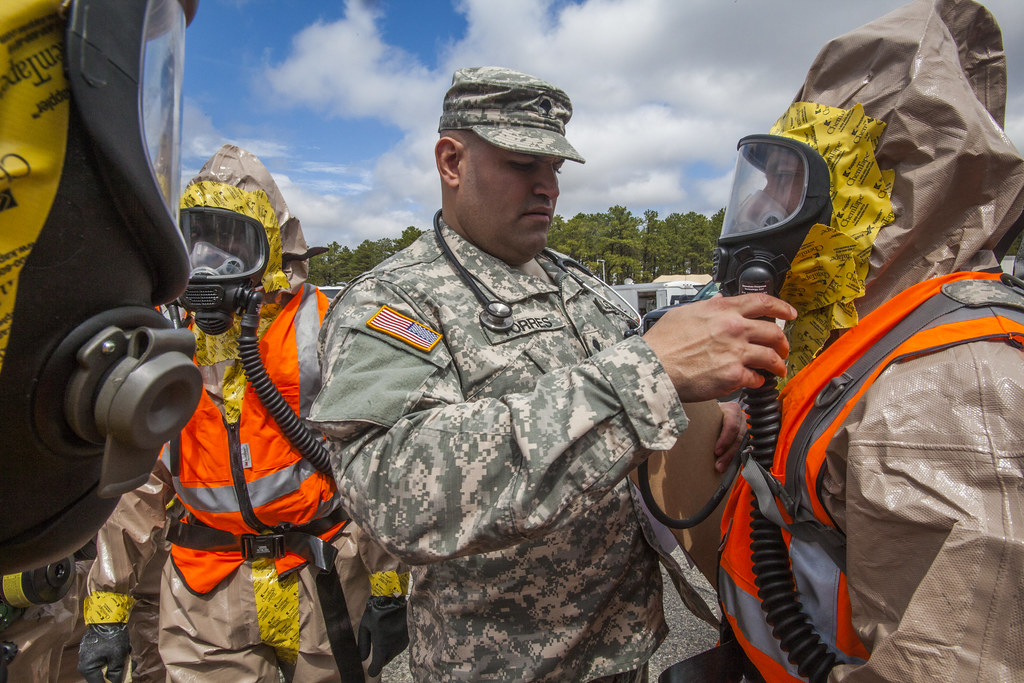
Although the respirators may seem a bit over-the-top, respiratory threats are very real in our industry. Luckily, we won’t need to wear them all the time; proper ventilation will be just fine for most of the scenarios we'll encounter. However, whenever you must work at a construction site or in a building that likely contains asbestos, you might want to wear a mask for safety.
Also, remember to follow Bert’s example if you have to crawl under dirty trailers for whatever reason.
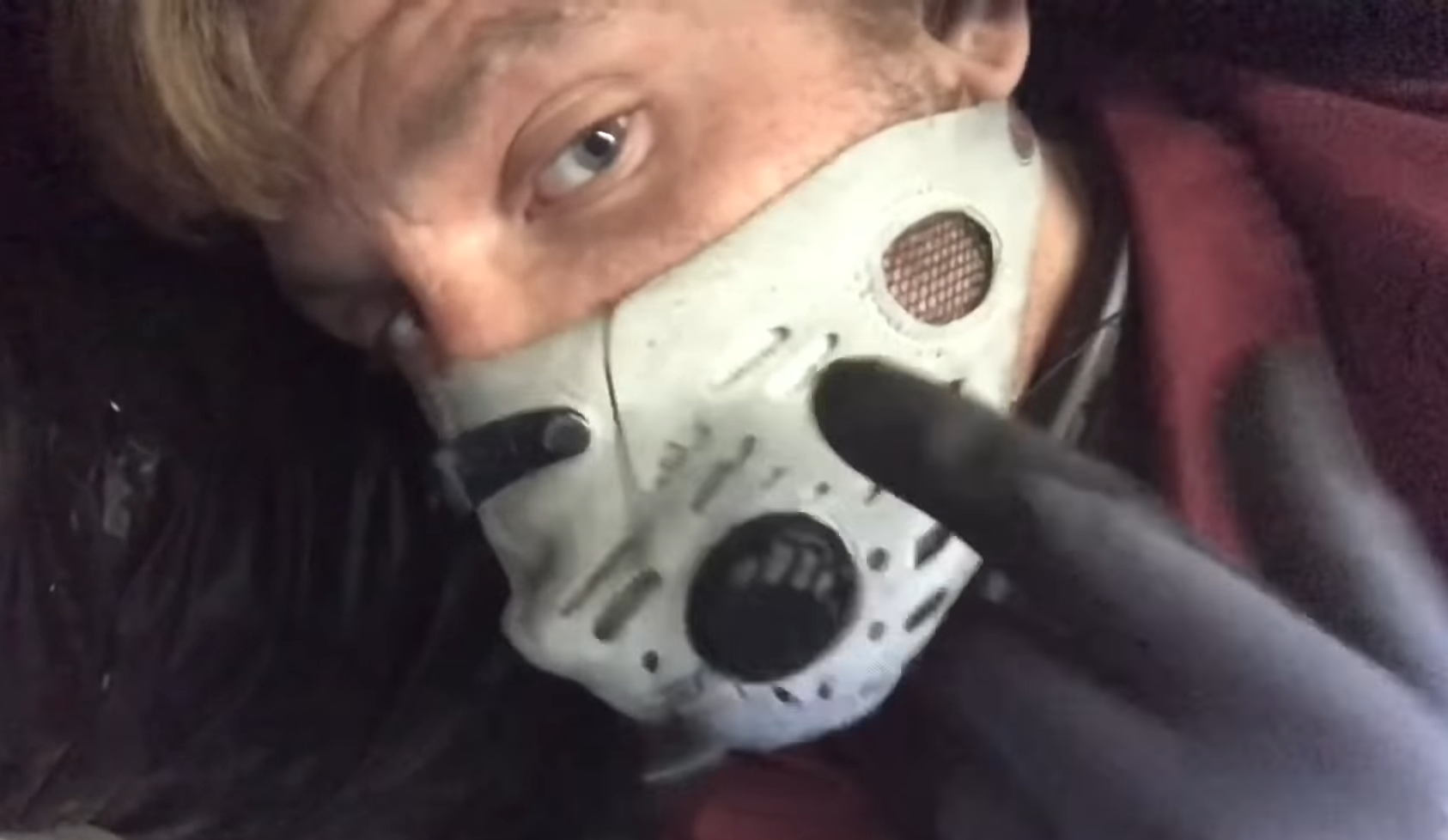
Special thanks to Henry Gifford, Jake McDougall, and Bill Spohn for their editorial contributions.












Comments
To leave a comment, you need to log in.
Log In